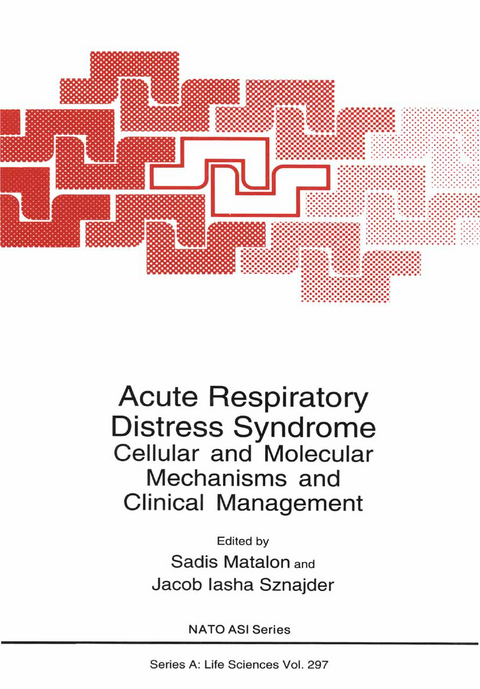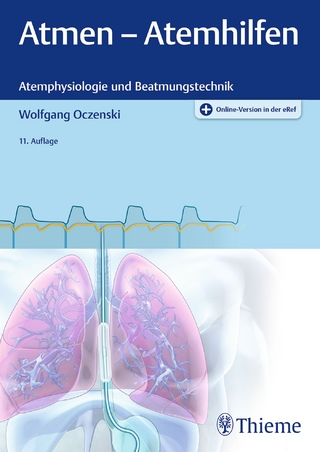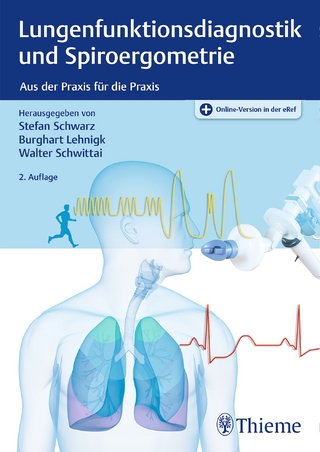
Acute Respiratory Distress Syndrome
Springer-Verlag New York Inc.
978-1-4613-4653-1 (ISBN)
Acute lung injury, respiratory failure, and acute respiratorydistresssyndrome associ- ated with sepsis and multiorgan dysfunction isbecoming more common in hospitals through- out the world. Although new classesofantimicrobial medications have been introduced and aggressive intensive life support systems are in use in many hospitals, mortality remains in the range of35 to 65 percent in even the best equipped medical facilities. However, with new technologies inphysiology and cellularand molecularbiology, wonderful opportunities now exist for scientists to explore more effective approaches to identificationofpatients at risk, to develop better insights to pathogenic mechanisms, to use new tools to follow the progression and natural history ofdisease, and to develop better modes oftherapies. The NATOAdvanced Study Institute on Acute RespiratoryDistress Syndrome: Cel- lularandMolecularMechanisms and ClinicalManagement was an outstanding opportunity for laboratory scientists and clinical investigators to discuss their own research approaches, explore opportunities for bringing newdimensions to their laboratories, and work together to identify possible clinical applications.
The conference brought together investigators who have worked with patients ofall ages, including those who have so successfully treated in- fants with respiratory distress syndrome. There is no doubt that this stimulating conference will bring new dimensions, new technologies, and new investigators into the scientific labo- ratoriesofeach participant. This provides hope that new therapeutic approaches will eventu- ally be available.
SECTION 1: SODIUM (Na+) TRANSPORT AND FLUID CLEARANCE ACROSS THE NORMAL AND INJURED LUNGS.- Regulation of the Sodium Pump in Hyperoxic Lung Injury.- Lung Edema Clearance during Hyperoxic Lung Injury.- The Role of Lung Lymphatics in Pulmonary Edema Clearance.- Molecular Biology of Lung Na+ Absorption.- Regulation of Alveolar Sodium Transport by Hypoxia.- Vectorial Movement of Sodium in Lung Alveolar Epithelium: Role and Regulation of Na+,K-ATPase.- The Premature Infant’s Inability to Clear Fetal Lung Liquid Results in Respiratory Distress Syndrome (RDS).- Role of Matrix Macromolecules in Controlling Lung Fluid Balance: Transition from a Dry Tissue to Edema**.- Role of the Na+-K+-ATPase ?2 Subunit in Lung Liquid Clearance**.- Aveolar Epithelial Fluid Transport under Normal and Pathological Conditions.- SECTION 2: ROLE OF THE PULMONARY SURFACTANT IN THE PATHOGENESIS AND TREATMENT OF ARDS.- Host Defense Capacities of Pulmonary Surfactant.- Alterations of Pulmonary Surfactant in ARDS—Pathogenic Role and Therapeutic Perspectives.- Surfactant Replacement in Patients with ARDS: Results of Clinical Trials.- Potential Role for Pulmonary Surfactant in Lung Transplantation.- Preparation of Surfactant and Lipid Vectors for Delivery of Proteins and Genes to Tissue.- Recombinant SP-C Based Surfactant Can Improve Lung Function in Saline Lavaged Sheep**.- SECTION 3: MECHANISMS AND MODIFICATION OF ACUTE AND CHRONIC LUNG INJURY.- Gene Therapy for the Acute Respiratory Distress Syndrome.- The Use of Recombinant Antioxidants in Neonatal Respiratory Distress Syndrome.- The Early Inflammatory Response in Acute Respiratory Distress Syndrome (ARDS).- The N-Nitroso-N-Methylurethane Induced Acute Lung Injury Animal Model for ARDS: Minireview.- Hyperoxia Induced Fibrosis in ARDS and Bpd:Current Pathology and Cytokine Profiles.- MAP Kinases in Airway Disease: Standing at the Confluence of Basic and Clinical Science.- Oxidant-Regulated Gene Expression in Inflammatory Lung Disease.- Pulmonary Edema of Mixed or Incompletely Understood Pathogenesis.- Biologic Markers of Acute Lung Injury.- Pathways to Oxidative Cell Death.- Divergent Effects of Hypoxia and Oxidants on Mitochondrial Superoxide Dismutase (MnSOD) Gene Expression.- Cellular Sources of Cytokines in Pulmonary Fibrosis.- Strategies to Speed Lung Healing in ARDS.- Pulmonary Microvascular Occlusion in Aggregate Anaphylaxis**.- The Expression of ICAM-1 and P-Selectin Are Increased following Hemorrhage and Resuscitation in Mice**.- Increased Levels of Markers of Protein Oxidation in Bronchoalveolar Lavage Fluid from Patients with ARDS**.- SECTION 4: VENTILATORY STRATEGIES FOR THE MANAGEMENT OF ACUTE RESPIRATORY DISTRESS SYNDROME (ARDS).- The Use of PEEP in the Treatment of ARDS.- Tracheal Gas Insufflation.- Mechanical Ventilation in ARDS: Good or Bad News?.- Ventilator-Induced Lung Injury in Patients with ARDS.- Mechanical Ventilation for ARDS: Should We Reduce Tidal Volume?.- Endotracheal Tube Resistance and Passive Expiratory Time during Mechanical Ventilation in ARDS.- Use of Liquid Ventilation in Animal Models of ARDS.- Inhaled Prostacyclin for the Treatment of ARDS.- Is There Improvement in the Prognosis of ARDS?.- Effect of Ventilation Strategy on Cytokine Expression in an ex Vivo Lung Model**.- Abnormal Tissue Oxygenation and Cardiovascular Changes in Endotoxaemia: Beneficial Effects of Volume Resuscitation**.- SECTION 5: NITRIC OXIDE: FRIEND AND FOE.- Mechanisms of Nitric Oxide Induced Injury to the Alveolar Epithelium.- Macrophage Killing of Mycoplasmas: Involvement of Surfactant Protein A and Nitric Oxide.- Exhaled Nitric Oxide in Patients Undergoing Cardiothoracic Surgery: A New Diagnostic Tool?.- ARDS: Nitric Oxide as Cause and Therapy in Multiple Organ Failure (MOF).- Role of Reactive Nitrogen Species in Asbestos-Induced Pleuro-Pulmonary Injury.- Biomarkers of Oxidative Stress in Adult Respiratory Distress Syndrome.- Reactive Oxygen and Nitrogen Species and Adult Respiratory Distress Syndrome (ARDS): New Mechanisms to Be Considered.- SECTION 6: HEALTH CARE LEGISLATION.- Health and Science Legislation in the United States.
| Erscheint lt. Verlag | 7.9.2012 |
|---|---|
| Reihe/Serie | Nato Science Series: A ; 297 |
| Zusatzinfo | XV, 432 p. |
| Verlagsort | New York, NY |
| Sprache | englisch |
| Maße | 170 x 244 mm |
| Themenwelt | Medizinische Fachgebiete ► Innere Medizin ► Pneumologie |
| Naturwissenschaften ► Biologie ► Zoologie | |
| ISBN-10 | 1-4613-4653-3 / 1461346533 |
| ISBN-13 | 978-1-4613-4653-1 / 9781461346531 |
| Zustand | Neuware |
| Informationen gemäß Produktsicherheitsverordnung (GPSR) | |
| Haben Sie eine Frage zum Produkt? |
aus dem Bereich


